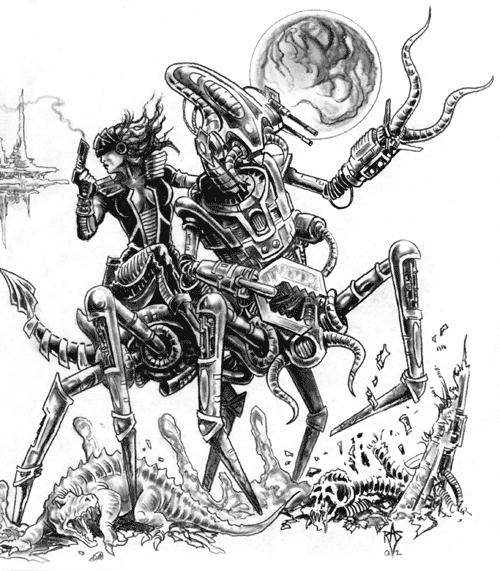Creating Emotionally Complex Moments and Situations Through Incongruence 1
Creating Emotionally Complex Moments and Situations Through Incongruence[1]
When incongruence occurs, the way our minds or spirits function is to try and assemble the pieces into a story or a mood in which the disparate elements make sense. Incongruence snaps us out of a lulled state of complacency. There are many forms of incongruence, and many uses of it. I want to talk about one form of visual incongruence, which can help create a rich world. (Other uses of incongruence will be discussed in Chapter 2.18 ("World Induction Techniques"), Chapter 5.2 ("Techniques for Creating Fun"), and Chapter 5.3 ("Gatherings"). Sights, sounds, language, and just about any other media can also be incongruent. When the incongruent items themselves have a richness or emotional resonance to them, the incongruence can help create a rich world.[2]
Example 1: In a game, your Guide, who has been leading you, takes you out of the dark forest and to the edge of a huge meadow, surrounded by towering peaks. You're caught up on their beauty. He looks at you and says: "This is where the our great leader, Kalnar, was slain. Thousands died. It's where our slavery began."
His sad words are incongruent with the scenic meadow. The emotional resonance in the image and in the words mean that, when combined, their incongruence create an emotional depth and complexity to the moment. Example 2: In a game set in the American Revolution, the Americans have taken a pounding. Many lay dying in the mud. Your captain is injured and can barely drag himself along the ground. Suddenly, a runner enters the scene and whispers something to him. He cracks a small smile, and says in a loud, hoarse whisper, "We've won." Here we see a reverse of the incongruence with the meadow. In this situation, the battlefield is a place of ruination and very emotionally resonant. But his words are happy. The incongruence creates a moment of emotional depth and complexity. |
EAN: 2147483647
Pages: 394

